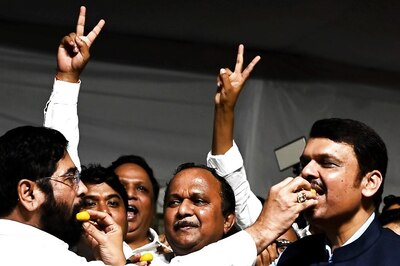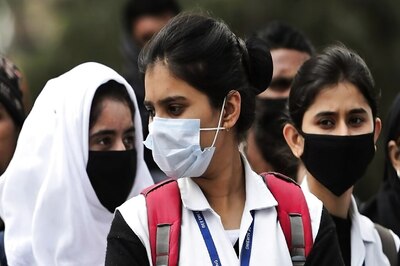
views
Travel on the Bangalore-Mysore highway can be likened to the motion of a spacecraft — the moments before which the craft breaks free from the earth’s atmosphere is akin to the agonisingly slow, bumper-to-bumper traffic between Bangalore and Kengeri; the craft’s easy travel in outer space can be approximated to the vehicle speed once past Kengeri, when drivers realise that their vehicles have more than one gear. Only, the spacecraft this time in my case was a KSRTC Volvo bus, and I was journeying to Sri Cheluvaraya Swamy temple in Melkote — whose presiding deity shares its cognomen with a large number of Kannadigas.The bus conductor is kind enough to wake me up at Srirangapatna where I alight and cross the road. A private bus from Mysore to Nagamangala comes my way; the conductor, upon enquiry, informs that I can get down at Jankhalli Cross, six km from the shrine, from where I can get an auto. The bus leads into an undulating road with the landscape interspersed with sugarcane fields, irrigated by an intricate network of canals from the river Cauvery, and sugar factories. I reach Jankhalli Cross and negotiate with an auto driver for the fare for taking me to the temple (ideally, they should not charge more than `60 plus inflationary charges). He deposits me at the Pushkarini (holy water tank) adjacent to the hill-top Yoga Narasimha temple.I decide to clamber up the flight of steps leading to the Yoga Narasimha Temple. One needs to scale the steps carefully, because although not numerous, the steps are of uneven sizes and heights. Halfway through I could have used an oxygen cylinder, but my efforts yield fruit when I reach the top, where the view of the surroundings is spell-binding, to say the least. (I am reminded of the Uchipillaiyar temple in Tiruchirappalli.)Its closing time here, and importantly, its prasadam time! A priest offers me in a banana leaf akkaravadasal (a variant of sweet pongal that uses sugar in lieu of jaggery) and coconut rice. I question him about the history of this temple, he says in a hurry that Lord Vishnu meditated here for about a century.So goes the history of the temple: The Vaishnavite philosopher Ramanujacharya (1017-1137), unable to bear the persecution of the then Chola emperor, Kulothunga I, a Saivite fanatic, had to flee Srirangam in Tamil Nadu, which houses the Ranganathaswamy temple. As he arrived at this spot, which was then covered with anthills, he received a premonition that a temple was located here. King Vishnuvardhana of the Hoysala dynasty joined in the saint’s endeavour and the temple was reconstructed in early 12th century. The temple is known for two other objects of worship that have interesting tales of their own — the Vairamudi, or diamond crown, and the Utsavamurthy, or the metallic image of the lord used during processions. Legend has it that the Vairamudi was presented to Anirudha, grandson of Lord Krishna, at the time of his marriage, when it was stolen by a rakshas (demon). It was left to Garuda, the mount of Lord Vishnu, to retrieve it and when he encountered the idol of Lord Cheluvaraya Swamy, he placed the crown on the idol, which proved a perfect fit. The Utsavamurthy was stolen by a Muslim invader from Delhi, Mohammed Badshah according to some accounts, who then gave it to his daughter to play with. Ramanujacharya, when he got to know of this, met the ruler and persuaded him to return it to the temple. The ruler is said to have mockingly replied that “you can take it if it comes with you”, when the saint beckoned to the idol, saying, “Chella pillai, varaai (Dear child, won’t you come with me?).” Lo, behold, the idol walked to Ramanujacharya, who promptly brought it back. However, the ruler’s daughter, Bibi, could not bear the separation from the idol and is said to have come all the way back to the temple, where she died. Even today, there is an idol of Bibi Nachiyaar (Naachiyaar being the title for feminine devotees of Lord Vishnu) at the temple.A Sanskrit college is located in the temple’s periphery. In fact, had it not been for the board, I would have mistaken it for a temple accounts office; curious, I decide to peep inside. The college houses some rare manuscripts — treatises on different forms of Hindu philosophy — most notably Vedanta Shastra.The principal says that the college was established about 150 years back by the Mysore Wadiyars, as they felt that a dedicated place for instruction was needed. The college received the Wadiyars’ patronage, and after independence, was taken over by the Government of India.




















Comments
0 comment